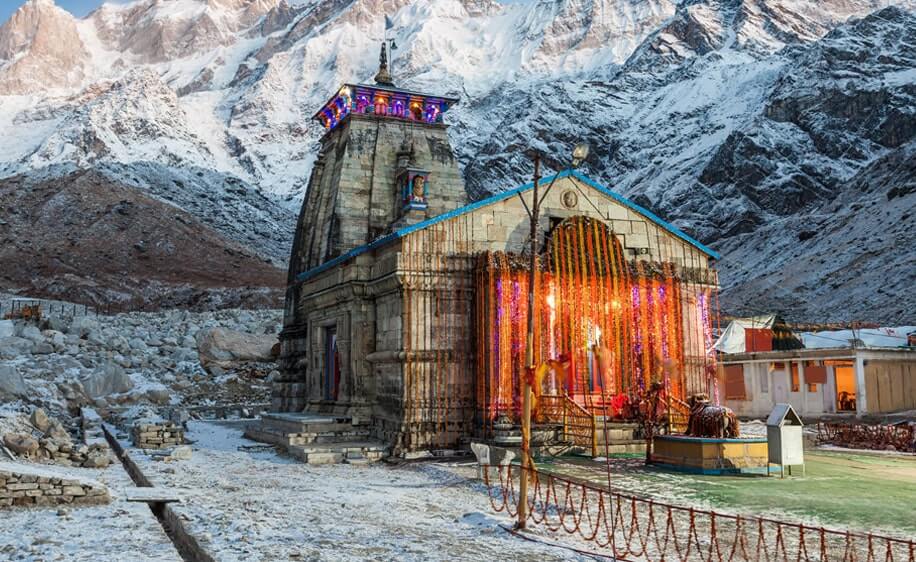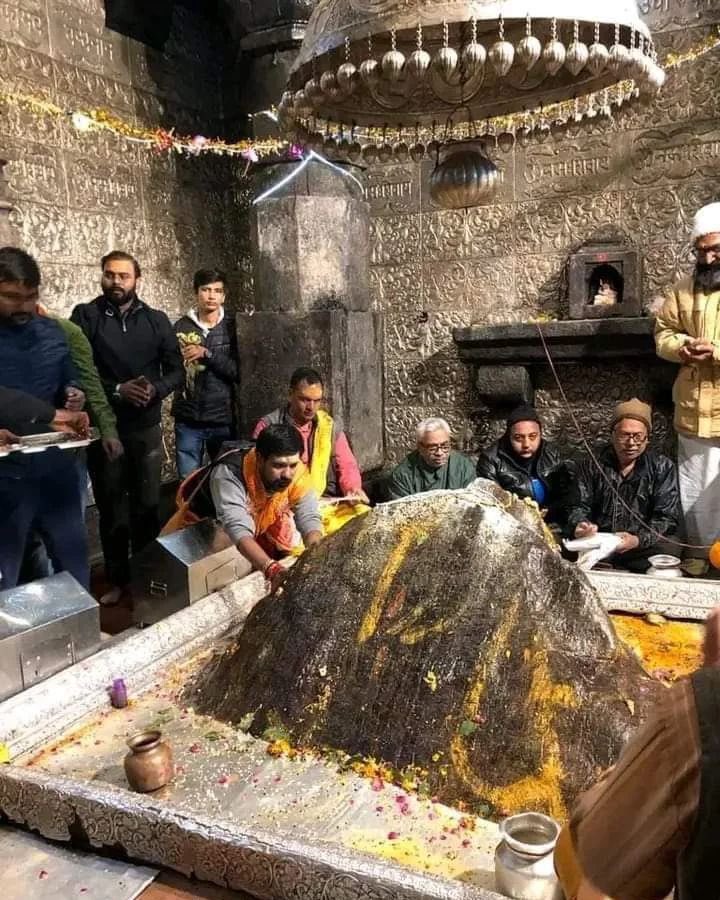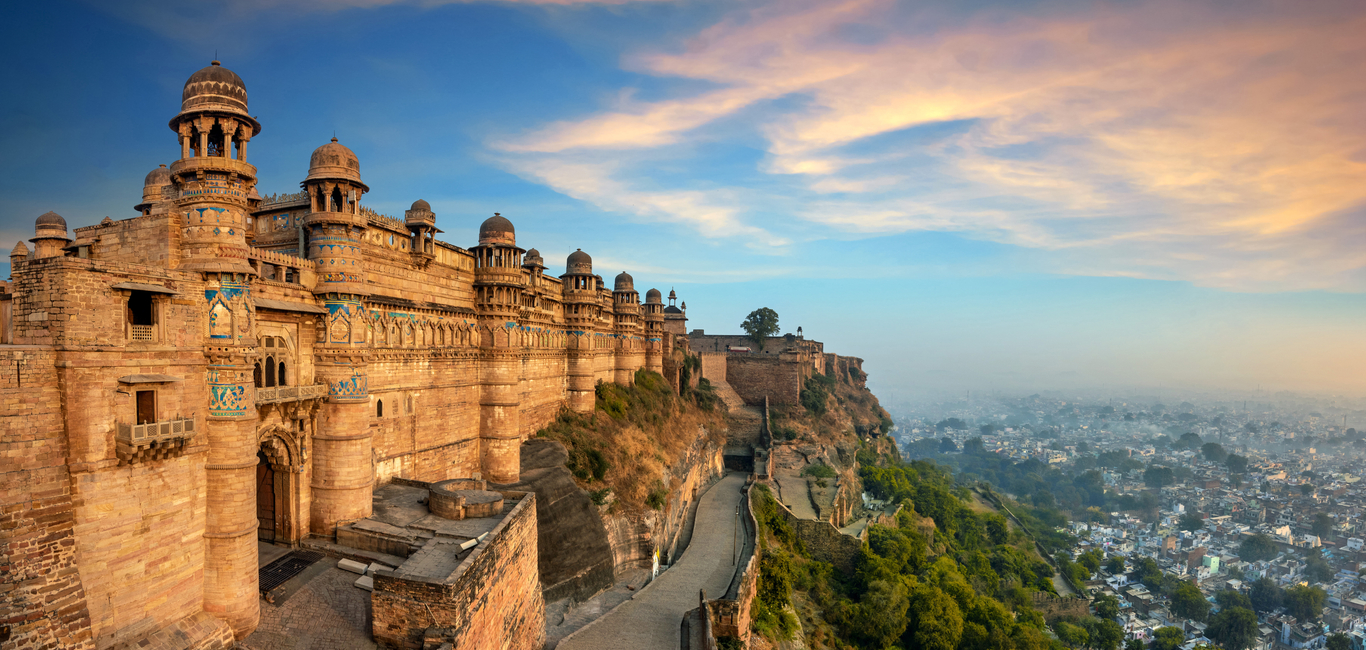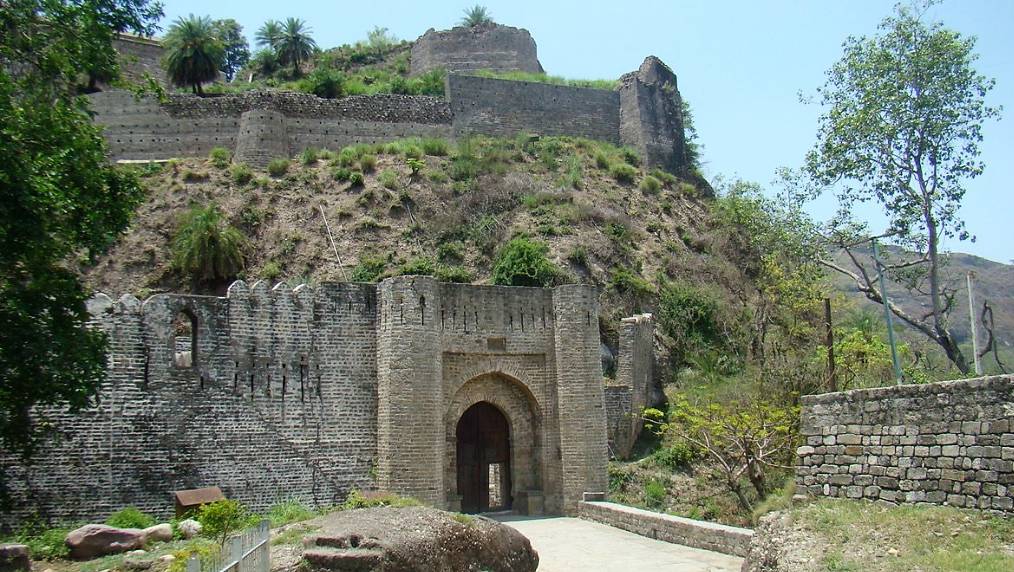Situated at an altitude of over 3,500 m above sea level in Uttarakhand, Kedarnath Jyotirlinga Temple in Rudraprayag, Uttarakhand, this temple is the highest of the 12 jyotirlingas in India. It is located at the head of the Mandakini and mythical Saraswati River in the Garhwal Himalayas.

History of Kedarnath Jyotirlinga
One of the first references to Kedarnath is in the Skanda Purana which was written around the 7th and 8th centuries AD. The present structure is believed to have been constructed by Adi Shankaracharya about 1,200 years ago. It stands next to the site of a temple that is said to have been built by the Pandavas. It has been renovated many times over the centuries.
The temple is built with huge stone slabs over a rectangular platform. There are inscriptions in Pali on the steps. There are figures of various deities and scenes from Hindu mythology on the inner walls. A large statue of the Nandi Bull, Shiva’s mount, stands as a guard at the entrance.
The jyotirlinga is in the shape of a conical rock formation inside the temple – Lord Shiva in his Sadashiva form.
Kedarnath Jyotirlinga holds an intriguing story
The legend behind this famous place of worship is that after the Mahabharata war, the Pandavas performed penance to purge their sins – of killing their kin. To be able to do this, they were advised to seek Lord Shiva’s pardon. They searched high and low and finally, saw Lord Shiva at the spot where the jyotirlinga in Kedarnath is situated today.
It is said that Lord Shiva was not willing to forgive the Pandavas for their deceit and sins during the war and hence hid from them. He disguised himself as a bull and disappeared into the ground.
The second Pandava, Bhimasena, tried to pull him out of the ground by tugging at his tail and hind legs. However, Lord Shiva dug himself deeper and only reappeared in parts in different places – the hump in Kedarnath, the arms in Tunganath, the navel and stomach in Madhyamaheshwar, the face in Rudranath, and the hair and head in Kalpeshwar.
The Pandavas built temples at these five places – the Panch Kedars – for worshipping Shiva. This freed them from their sins.
Lord Shiva further promised to stay on in the sacred spot as a triangular jyotirlinga. This is why Kedarnath is so famous and revered by devotees.

Interesting facts about Kedarnath Jyotirlinga
- Since Kedarnath is located at such an altitude, winters are severe, making the temple inaccessible. So, it is open to the public only between April and November. It closes on the first day of Kartik (October-November) and opens in Vaisakh (April-May) every year. During the winters, the murtis (idols) from the Kedarnath temple are brought to Ukhimath and worshiped there for six months.
- In the 2013 floods, while adjacent areas were severely damaged, the Kedarnath temple itself was not affected.
- Kedarnath is the first of the Panch Kedars.
Considered one of the holiest temples for Lord Shiva, pilgrims devotedly visit this mountainous temple every year. While the main Kedarnath temple is normally closed during Mahashivratri celebrations, the Badri-Kedar festival is celebrated over a week in June every year.
Visit MakeMyTrip for bookings. Also, have a look at our various monthly issues.



